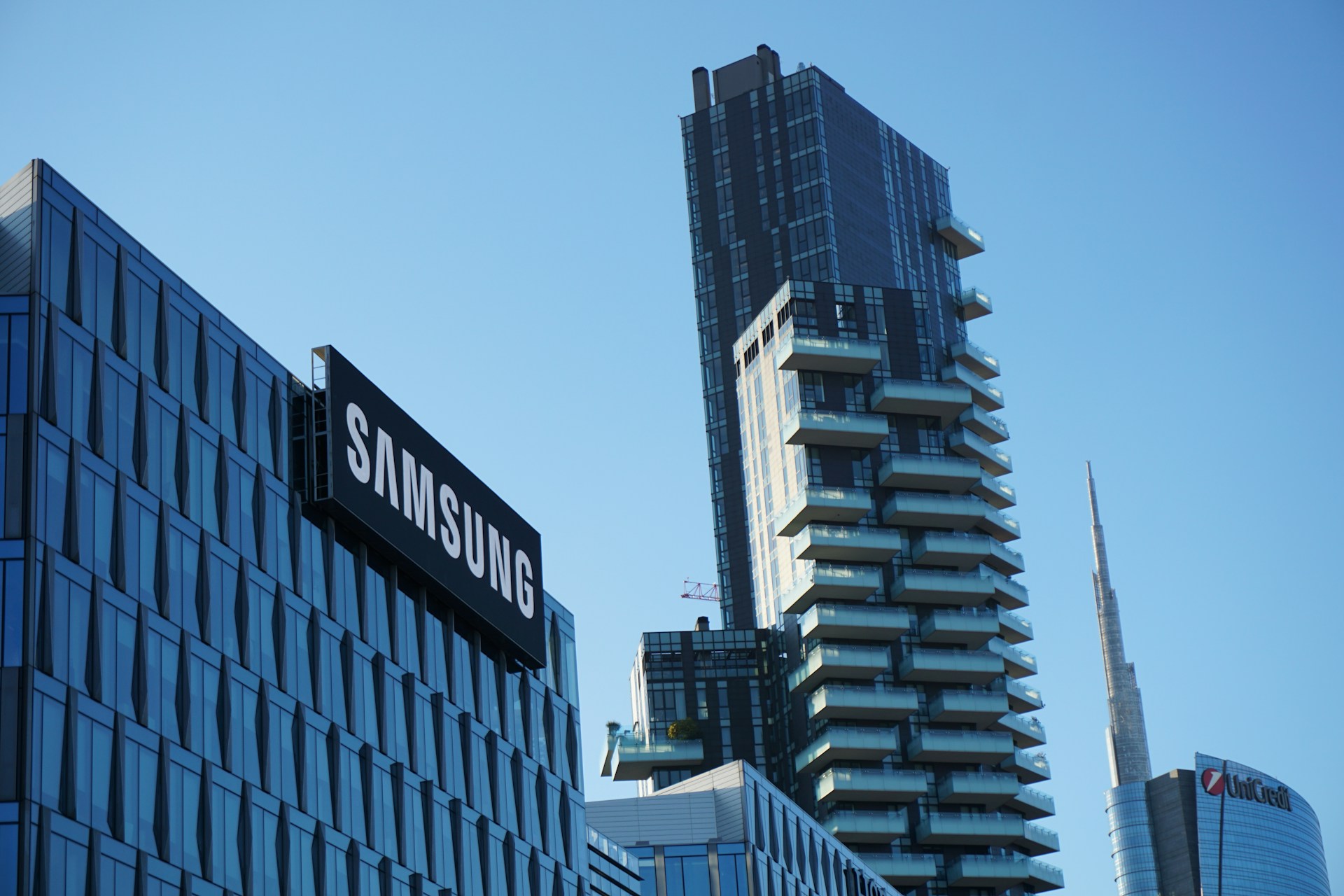Samsung Electronics (KS:005930) is poised to weather U.S. tariff hikes better than competitors, thanks to its TV production strategy. According to Yong Seok-woo, President of Samsung’s Visual Display division, most of the company’s televisions sold in North America are manufactured in Mexico—shielding it from steep U.S. tariffs. Mexico was largely exempted from the latest 10% global tariff and the additional "reciprocal tariffs" announced by President Donald Trump.
In contrast, Chinese-made TVs now face a 54% total tariff, after a new 34% levy was added to the existing 20%, severely impacting brands like TCL and Hisense. Vietnam, where Samsung also operates factories, has been hit with a hefty 46% tariff, one of the highest among nine Southeast Asian countries affected.
Samsung, the world’s leading TV manufacturer, remains vigilant about shifting U.S. trade policies. The company plans to strategically allocate production across its 10 global manufacturing bases depending on tariff developments to minimize risks and maintain supply chain efficiency.
Despite its favorable position in the TV segment, Samsung could face challenges in other core businesses. Its memory chip and smartphone divisions may suffer from reduced global demand if tariffs continue to rise, especially in key markets like the U.S.
On Monday, Samsung shares dropped 4.3% amid broader market concerns tied to escalating trade tensions. As the company grapples with increasing competition from Chinese tech firms and geopolitical uncertainties, its diversified manufacturing approach may prove critical in maintaining market leadership.
By leveraging Mexico-based production and a flexible global supply chain, Samsung is navigating the tariff storm more smoothly than its rivals—positioning itself for resilience in a volatile trade environment.



 Visa to Move European Headquarters to London’s Canary Wharf
Visa to Move European Headquarters to London’s Canary Wharf  OpenAI Moves to Acquire Neptune as It Expands AI Training Capabilities
OpenAI Moves to Acquire Neptune as It Expands AI Training Capabilities  Waymo Issues Recall After Reports of Self-Driving Cars Illegally Passing School Buses in Texas
Waymo Issues Recall After Reports of Self-Driving Cars Illegally Passing School Buses in Texas  Tesla Expands Affordable Model 3 Lineup in Europe to Boost EV Demand
Tesla Expands Affordable Model 3 Lineup in Europe to Boost EV Demand  Firelight Launches as First XRP Staking Platform on Flare, Introduces DeFi Cover Feature
Firelight Launches as First XRP Staking Platform on Flare, Introduces DeFi Cover Feature  Netflix Nearing Major Deal to Acquire Warner Bros Discovery Assets
Netflix Nearing Major Deal to Acquire Warner Bros Discovery Assets  Tesla Faces 19% Drop in UK Registrations as Competition Intensifies
Tesla Faces 19% Drop in UK Registrations as Competition Intensifies  Lockheed Martin Secures $1.14 Billion Contract Boost for F-35 Production
Lockheed Martin Secures $1.14 Billion Contract Boost for F-35 Production  Amazon Italy Pays €180M in Compensation as Delivery Staff Probe Ends
Amazon Italy Pays €180M in Compensation as Delivery Staff Probe Ends  Boeing Acquisition of Spirit AeroSystems Could Close Soon Amid Ongoing Conditions
Boeing Acquisition of Spirit AeroSystems Could Close Soon Amid Ongoing Conditions  YouTube Agrees to Follow Australia’s New Under-16 Social Media Ban
YouTube Agrees to Follow Australia’s New Under-16 Social Media Ban  IKEA Expands U.S. Manufacturing Amid Rising Tariffs and Supply Chain Strategy Shift
IKEA Expands U.S. Manufacturing Amid Rising Tariffs and Supply Chain Strategy Shift  Wikipedia Pushes for AI Licensing Deals as Jimmy Wales Calls for Fair Compensation
Wikipedia Pushes for AI Licensing Deals as Jimmy Wales Calls for Fair Compensation  EU Prepares Antitrust Probe Into Meta’s AI Integration on WhatsApp
EU Prepares Antitrust Probe Into Meta’s AI Integration on WhatsApp  Proxy Advisors Urge Vote Against ANZ’s Executive Pay Report Amid Scandal Fallout
Proxy Advisors Urge Vote Against ANZ’s Executive Pay Report Amid Scandal Fallout  Hikvision Challenges FCC Rule Tightening Restrictions on Chinese Telecom Equipment
Hikvision Challenges FCC Rule Tightening Restrictions on Chinese Telecom Equipment 




























